Evaporative Cooling Concept
As the name implies, evaporative cooling works by evaporating water into the air stream. This principle is best illustrated in a personal way by chilling effect that you feel when you come out of a swimming pool and a wind blows across your body! The chilling effect is caused by the evaporation process of the water drying quickly from your body. The same thing happens when you sweat. A “cool breeze” is just air flowing over your body evaporating the sweat. It is nature’s way of keeping us cool during hot weather or physical exertion.

Evaporative cooling is the use of this evaporation process to cool the air passing through a wetted cooling media. The cooling media could be as simple as a wet cloth. In fact, this process has been used for hundreds (if not thousands) of years. Hanging a wet cloth over an open window cools the air passing through the cloth.
Different Evaporative Cooling Types
These simple examples illustrate direct evaporative cooling. Modern technology has dramatically increased the efficiency and effectiveness of direct evaporative cooling and made possible other types of evaporative cooling too like Indirect evaporative air cooling, indirect/direct evaporative cooling, indirect/indirect evaporative cooling, and indirect/DX evaporative cooling.
Direct evaporative cooling (Single Stage Cooling)
With direct evaporative cooling, outside air is blown through a water-saturated medium (usually cellulose -Honey comb cooling pads) and cooled by evaporation. The cooled air is circulated by a blower.
Direct evaporative cooling adds moisture to the air stream until the air stream is close to saturation. The dry bulb temperature* is reduced, while the wet bulb temperature stays the same.


Indirect evaporative cooling
In Indirect evaporative cooling Hot Air and water travel in different channels and do not come directly in contact with each other ,hence the name Indirect Evaporative Cooilng.
In IEC, warm primary air cools by losing its heat to a thin water film on the other side of a conducting surface. Another air stream called Secondary or Scavenging air moves upward through falling water and evaporates this water, thereby, converting most of the sensible heat into latent heat, before it is exhausted to the outside. Thus, the primary air is cooled without coming in contact with the water stream. Hence, IEC reduces the dry bulb temperature, wet-bulb temperature and the enthalpy of the primary air without adding any moisture to it.
Indirect-direct evaporative cooling ( Two Stage Cooling )
In Indirect Evaporative cooling the primary air is cooled without coming in contact with water .Hence in first stage air is cooled without adding any moisture to it and then cooled further in the second stage with direct evaporative cooling process with extra reduction of 5 to 6 Degree C air temperature.
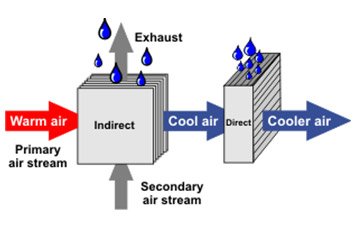
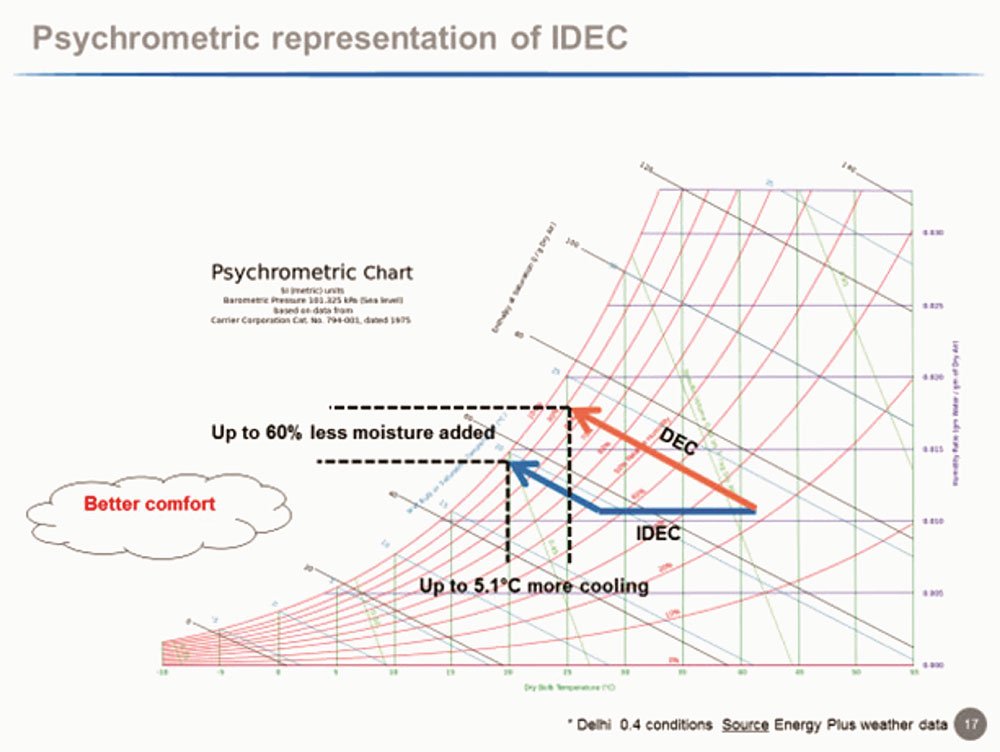
What’s so great about evaporative cooling?
Evaporative cooling is economical, effective, environmentally friendly, and healthy.
Economical
Evaporative cooling is economical because it:
- Reduces Electricity consumption by nearly 60-80% compared to Refrigerated Air Conditioning.
- Reduces DX/chilled water cooling requirements for fresh air.
- Cuts mechanical cooling costs 25% to 65%.
- Increases existing equipment cooling capacities without adding mechanical cooling.
Effective
- Evaporative cooling actually becomes more effective as the temperature increases—just when DX air conditioning becomes less effective.
- Evaporative cooling works in all areas of the country, not just in hot, dry climates. , it is dry in summer. In fact, in humid regions too humidity almost always decreases proportionally as the temperature increases. So the cooling power of evaporative systems increases as the temperature increases.
Environmentally friendly
Because evaporative cooling does not use chlorofluorocarbons (CFCs), it does not contribute to ozone depletion.
Healthy
- Evaporative cooling is healthy and comfortable because it:
- Brings in outside air and exhausts stale air, smoke, odors, and germs.
- Helps maintain natural humidity levels, which benefits both people and furniture and cuts static electricity.
- Does not need an air-tight structure for maximum efficiency, so building occupants can open doors and windows.
What kind of temperature reductions can I expect with evaporative cooling?
The greater the difference between the wet bulb and dry bulb temperatures, the greater the achievable temperature reduction. Here’s how to calculate temperature reductions achievable with direct, indirect, indirect/direct, and indirect/indirect evaporative cooling. These examples use a starting dry bulb (DB) temperature of 42 degrees Centigrade and wet bulb (WB) temperature of 23.5 degrees C at 21% Relative Humidity, Specific Humidity =10.7 g /Kgs ( 0.4% design conditions for Delhi / Jaipur as per IS-7896-1981 / Ashrae Handbook-2005.
Temperature reduction achievable using direct evaporative cooling
NOTE
With direct evaporative cooling, the dry bulb temperature is reduced while the web bulb temperature remains the same.

1. Temp drop achievable = (dry bulb – wet bulb ) x (efficiency* of the media)
Example: (42 degrees – 23.5 degrees) x .9 = 16.65 degrees
2. Achievable temp = dry bulb – temp drop achievable
Example: 42 degrees – 16.6 degrees = 25.4 degrees DB/23.5 degrees WB**
3. Starting DB: 42 degrees
Ending DB: 25.4 degrees
*Efficiency is usually 90%
**Because cooling is achieved by adding moisture to the supply air stream, the new dry bulb/web bulb temperatures are found on the wet bulb gradient.
Temperature reduction achievable using indirect evaporative cooling
NOTE:
With indirect evaporative cooling, both the dry bulb and web bulb temperatures are reduced.

1. Temp drop achievable = (dry bulb – wet bulb) x (efficiency* of indirect module)
Example: (35 degrees – 23.9 degrees) x .7 = 7.7 degrees
2. Achievable temp = dry bulb – temp drop achievable
Example: 35 degrees – 7.8 degrees = 27.2 degrees DB/19.4 degrees WB**
3. Starting DB: 35 degrees
Ending DB: 27.2 degrees
*Efficiency is usually 60%-70%
**Because no moisture is added to the supply air stream, the new dry bulb/wet bulb temperatures are found on the dry bulb gradient
Temperature reduction achievable using indirect/direct evaporative cooling
First calculate the dry bulb and wet bulb temperatures achievable with indirect evaporative cooling:
1. Temp drop achievable = (dry bulb – wet bulb ) x (efficiency of indirect module)
Example: (42 degrees C- 23.5degrees C) x .7 = 13 degreesC
2. Achievable temp = dry bulb – temp drop achievable
Example: 42 degrees – 13 degrees = 29 degrees DB/19.5 degrees WB
3. Starting DB: 42 degrees
Ending DB: 29 degrees

Then use the dry bulb/wet bulb values from step 3 to calculate the dry bulb/wet bulb temperatures achievable with direct evaporative cooling:
4. Temp drop achievable: (dry bulb – wet bulb ) x (efficiency of the media)
Example: (29 degrees – 19.5 degrees) x .9 = 8.6 degreesC
5. Achievable temp = dry bulb – temp drop achievable
Example: 29 degrees – 8.6 degrees = 20.4 degrees DB/19.5 degrees WB
6. Total temperature reduction using indirect/direct evaporative cooling:
Starting DB: 42 degrees C
Ending DB: 20.4 degrees C
Where can I use evaporative cooling?
In many locations and for many applications, evaporative cooling is all the cooling required to maintain a comfortable indoor environment. In hotter areas or where cooling loads are high, such as in office buildings, one of the most useful applications for indirect/direct evaporative cooling is supplementing a chiller or DX system. By cooling the air stream before it reaches the cooling coil, an indirect/direct evaporative unit extends chiller life, cuts energy costs, and provides the boost the chiller needs to function effectively on hot days.
What are the basic technical terms used in evaporative cooling ?
Dry Bulb: The ambient (surrounding air) temperature taken with a thermometer.
Wet Bulb: The lowest temperature level of the air that can be reached by evaporatively cooling the air.
Wet Bulb Depression: The difference between the Dry Bulb and Wet Bulb temperatures. I.E. if Dry Bulb is 100 degrees (f) and the Wet Bulb is 70 degrees (f), the Web Bulb Depression is 30 degrees (f). The Wet Bulb Depression depends upon the efficiency of the cooling media and depth of cooling media used.
Cooling Efficiency: The percent of the temperature drop across the media compared to the Wet Bulb Depression. I.E. if the Wet Bulb Depression is 30 degrees (f) (as in the above example) and the actual temperature drop measured across the cooling media is 27 degrees (f), the cooling efficiency of the media is 90%. (27/30 = .90). The cooling efficiency is also referred to as “Saturation Efficiency” because it refers to the amount of moisture that is packed into the air. 100% Saturation Efficiency would indicate a temperature drop of 30 degrees (f) in the above example of wet bulb depression.
Dewpoint: The temperature at which moisture begins to form on a slick surface indicating 100% saturation of the air with moisture. That is how the dew gets on the grass in the morning. The dry bulb air temperature drops to the wet bulb temperature level.
Absolute humidity: Actual measurement of water vapour in the air.
Relative humidity: The percent of moisture in the air compared to the amount of moisture the air could contain. This is the most common reading to be reported in the weather reports. The report of “100 degrees and 12% relative humidity (RH)” is the same as all the above examples. Using the analogy of a glass half filled with water means the glass is 50% full. It could hold an additional 50% at which point it would start to overflow if more water was added.
Evaporation Rate: The rate at which water is absorbed into the air passing through the cooling
media. For practical purposes, this rate is measured in gallons of water per hour (or minute).
Cooling Media: The Evaporative Cooling Pad, made of cellulose paper is engineered from cross-sectional specially treated flute media capable of absorbing and retaining water to provide the maximum cooling efficiencies. The cellulose media is treated with stiffening and rot-resisting agents to increase its useful life. The geometry of the cellulose media provides cooling without any water carryover as long as the air velocity through the pads is less than the recommended maximum.
What are recommended air changes & ventilation rates ?
Recommended Air Changes per Hour
| Application Areas | Air Changes / Hours |
|---|---|
| Assembly Halls | 8 |
| Auditoriums | 15 |
| Bakeries | 20 |
| Boiler Rooms | 15 |
| Bowling Alleys | 10 |
| Dry Cleaners | 12 |
| Engine Rooms | 40 |
| Factories | 30 |
| Forges | 12 |
| Foundries | 12 |
| Garages | 12 |
| Generator Rooms | 30 |
| Gymnasiums | 12 |
| Kitchens | 20 |
| Laundries | 12 |
| Machine Shops | 12 |
| Mills (Paper) | 20 |
| Mills (Textiles) | 10 |
| Packing Houses | 6 |
| Recreation Rooms | 10 |
| Residences | 12 |
| Restaurants | 12 |
| Retail Stores | 8 |
| Shops (General) | 8 |
| Theaters | 8 |
| Toilets | 12 |
| Transformer Rooms | 12 |
| Turbine Rooms | 10 |
| Warehouses | 6 |
Ventilation Rates for Acceptable Indoor Air Quality
| Space | Outdoor Air Required(CFM / Person) | Occupancy(People/100 sqft) |
|---|---|---|
| Auditoriums | 15 | 150 |
| Ballrooms/Discos | 25 | 100 |
| Bars | 30 | 100 |
| Beauty Shops | 25 | 25 |
| Classrooms | 15 | 50 |
| Conference Rooms | 20 | 50 |
| Dormitory Sleeping Rooms | 15 | 20 |
| Dry Cleaners | 30 | 30 |
| Gambling Casinos | 30 | 120 |
| Game Rooms | 25 | 70 |
| Hardware Stores | 15 | 8 |
| Hospital Operating Rooms | 30 | 20 |
| Hospital Patient Rooms | 25 | 10 |
| Laboratories | 20 | 30 |
| Libraries | 15 | 20 |
| Medical Procedure Rooms | 15 | 20 |
| Office Spaces | 20 | 7 |
| Pharmacies | 15 | 20 |
| Photo Studios | 15 | 10 |
| Physical Therapy | 15 | 20 |
| Restaurant Dining Rooms | 20 | 70 |
| Retail Facilities | 15 | 20 |
| Smoking Lounges | 62 | 70 |
| Sporting Spectator Areas | 15 | 150 |
| Supermarkets | 15 | 8 |
| Theaters | 15 | 150 |
Cooling equipment
Evapoler can be used in all kinds of cooling equipment rooms. It is the most energy-saving and economical cooling way.


Net Bar
In public place such as net bar, if we always use conventional aircon, 80%-90% of indoor air will circulate and become muddy. However, if we use Evapoler air cooler, the indoor air can not only be cooled down, but also keep fresh.
Commercial Places such as Supermarkets
In big commercial places, Evapoler Air Coolers can circulate the inside air and supply consumers with fresh air, making a healthy and comfortable public environment.


Cooling Communication Room and Station
Evapoler Air Coolers can be used in kinds of communication rooms. It is the most energy-saving and economical cooling way.
Spot Cooling
If it is no need to cool all space, Evapoler Air Coolers can be designed to just offer spot cooling and energy is saved.


Humidifying
For textile industry, especially in hot summer, it not only needs to cool the workshop, but also needs to keep some humidity in the workshop. By installing Evaporative Air Coolers, these two problems are resolved.
Food Processing Industry
For food processing industry, Evapoler Air Coolers can help shorten cool time of the food, improve production efficiency and product quality.


Green Houses
Evaporative Air Coolers can be the best choice for the flowers plants as they can supply the flowers with the most natural cool air which is good for the Flowers growth.
Kitchen
Evapoler Air Coolers can be used in big kitchens of hotels, restaurants,etc. to help exhaust the waste gas and supply cooks a good and cool working environment.


Kitchen
Evapoler Air Coolers can be used in big kitchens of hotels, restaurants,etc. to help exhaust the waste gas and supply cooks a good and cool working environment.
Supply Fresh Air
In electronics industry, workers often feel terrible in hot summer day. By installing Evaporative Air Coolers, it can supply workers in a cool and clean environment.

How many evaporative coolers you should install ?
Ventilation Frequency for different area.
| Normal environnment | Crowded environment | With heat equipment | High temperature and serious pollution |
|---|---|---|---|
| 25-30 times/hour | 30-40 times/hour | 40-50 times/hour | 50-60times/hour |
How should you choose evaporative cooler?
- Normal priority choose Series A 18000~20000 m3/h cooler,it suit any place.
- For Industrial,workshop,warehouse,big noise place you can choose Series B 18000~20000 m3/h or 30000 m3/h .
How choose evaporative cooler quantity for your place ?
N–quantity coolers
S–area need cooling down
n–ventilation frequency
v=S*h(the height of wind)
V–volume need cooling down
h–the height of wind
Q–cooler airflow
Formula as below
quantity coolers N =(V*n)/Q
Ventilation frequency n =(Q*N)/V
For example
If you need cooling down the factory area 1000 M2, height 4M (assuming the factory does not have heat equipment) ,there the ventilation frequency should be 25-30 times/h,and you choose 18000 M3/h cooler .
so V=1000*4=4000M3
N=(4000*30)/18000=6.6(so you should install 7 pcs coolers.)

| Ambient Dry Bulb Temperature (0C) | Ambient Relative Humidity | ||||||||
|---|---|---|---|---|---|---|---|---|---|
| 10% | 20% | 30% | 40% | 50% | 60% | 70% | 80% | 90% | |
| 10 | 2.9 | 4 | 4.6 | 5.4 | 6.3 | 7.2 | 8 | 8.5 | 9.4 |
| 15 | 6.5 | 8.1 | 8.5 | 10 | 10.6 | 11.5 | 12.5 | 13.2 | 14.2 |
| 20 | 10.1 | 10.4 | 12.8 | 13.7 | 15 | 16.1 | 17.2 | 18.1 | 19 |
| 25 | 13.8 | 15.2 | 17 | 18.2 | 19.4 | 20.5 | 21.6 | 22.8 | 24 |
| 30 | 16.6 | 18.8 | 20 | 22.1 | 23.5 | 24.9 | 26 | 27.2 | 28.8 |
| 35 | 20 | 24 | 24.2 | 26 | 28.1 | 29.9 | 31 | 32.2 | 33.4 |
| 40 | 23 | 28.1 | 29 | 30.5 | 32.2 | 33.7 | N/A | N/A | N/A |
| 45 | 25.7 | 29 | 32 | 34.2 | N/A | N/A | N/A | N/A | N/A |
| 50 | 29 | 32.5 | 35.6 | N/A | N/A | N/A | N/A | N/A | N/A |
Evaporative air cooler is not an air conditioner, as it does not use a compressor and Freon gas. We could not expect an Evaporative Air Cooler to deliver the kind of coolness as refrigerated air conditioner does. However, compared with air conditioner the advantages of the Evaporative Air Cooler are:
- Low purchasing cost
- Low power consumption
- Easy to install and hence Low installation cost
- Easy to use and as such maintenance cost is low
- Green, energy-saving, eco-friendly
- Windows and doors can be kept open
- Multifunctional: Air cooling, ventilation, humidification, purifier
- Widely used in indoor and outdoor applications
- Evaporative types
-
Evaporative Cooling Concept
As the name implies, evaporative cooling works by evaporating water into the air stream. This principle is best illustrated in a personal way by chilling effect that you feel when you come out of a swimming pool and a wind blows across your body! The chilling effect is caused by the evaporation process of the water drying quickly from your body. The same thing happens when you sweat. A “cool breeze” is just air flowing over your body evaporating the sweat. It is nature’s way of keeping us cool during hot weather or physical exertion.

Evaporative cooling is the use of this evaporation process to cool the air passing through a wetted cooling media. The cooling media could be as simple as a wet cloth. In fact, this process has been used for hundreds (if not thousands) of years. Hanging a wet cloth over an open window cools the air passing through the cloth.Different Evaporative Cooling Types
These simple examples illustrate direct evaporative cooling. Modern technology has dramatically increased the efficiency and effectiveness of direct evaporative cooling and made possible other types of evaporative cooling too like Indirect evaporative air cooling, indirect/direct evaporative cooling, indirect/indirect evaporative cooling, and indirect/DX evaporative cooling.
Direct evaporative cooling (Single Stage Cooling)
With direct evaporative cooling, outside air is blown through a water-saturated medium (usually cellulose -Honey comb cooling pads) and cooled by evaporation. The cooled air is circulated by a blower.
Direct evaporative cooling adds moisture to the air stream until the air stream is close to saturation. The dry bulb temperature* is reduced, while the wet bulb temperature stays the same.


Indirect evaporative cooling
In Indirect evaporative cooling Hot Air and water travel in different channels and do not come directly in contact with each other ,hence the name Indirect Evaporative Cooilng.
In IEC, warm primary air cools by losing its heat to a thin water film on the other side of a conducting surface. Another air stream called Secondary or Scavenging air moves upward through falling water and evaporates this water, thereby, converting most of the sensible heat into latent heat, before it is exhausted to the outside. Thus, the primary air is cooled without coming in contact with the water stream. Hence, IEC reduces the dry bulb temperature, wet-bulb temperature and the enthalpy of the primary air without adding any moisture to it.
Indirect-direct evaporative cooling ( Two Stage Cooling )
In Indirect Evaporative cooling the primary air is cooled without coming in contact with water .Hence in first stage air is cooled without adding any moisture to it and then cooled further in the second stage with direct evaporative cooling process with extra reduction of 5 to 6 Degree C air temperature.


What’s so great about evaporative cooling?
Evaporative cooling is economical, effective, environmentally friendly, and healthy.
Economical
Evaporative cooling is economical because it:
- Reduces Electricity consumption by nearly 60-80% compared to Refrigerated Air Conditioning.
- Reduces DX/chilled water cooling requirements for fresh air.
- Cuts mechanical cooling costs 25% to 65%.
- Increases existing equipment cooling capacities without adding mechanical cooling.
Effective
- Evaporative cooling actually becomes more effective as the temperature increases—just when DX air conditioning becomes less effective.
- Evaporative cooling works in all areas of the country, not just in hot, dry climates. , it is dry in summer. In fact, in humid regions too humidity almost always decreases proportionally as the temperature increases. So the cooling power of evaporative systems increases as the temperature increases.
Environmentally friendly
Because evaporative cooling does not use chlorofluorocarbons (CFCs), it does not contribute to ozone depletion.
Healthy
- Evaporative cooling is healthy and comfortable because it:
- Brings in outside air and exhausts stale air, smoke, odors, and germs.
- Helps maintain natural humidity levels, which benefits both people and furniture and cuts static electricity.
- Does not need an air-tight structure for maximum efficiency, so building occupants can open doors and windows.
What kind of temperature reductions can I expect with evaporative cooling?
The greater the difference between the wet bulb and dry bulb temperatures, the greater the achievable temperature reduction. Here’s how to calculate temperature reductions achievable with direct, indirect, indirect/direct, and indirect/indirect evaporative cooling. These examples use a starting dry bulb (DB) temperature of 42 degrees Centigrade and wet bulb (WB) temperature of 23.5 degrees C at 21% Relative Humidity, Specific Humidity =10.7 g /Kgs ( 0.4% design conditions for Delhi / Jaipur as per IS-7896-1981 / Ashrae Handbook-2005.
Temperature reduction achievable using direct evaporative cooling
NOTE
With direct evaporative cooling, the dry bulb temperature is reduced while the web bulb temperature remains the same.
1. Temp drop achievable = (dry bulb – wet bulb ) x (efficiency* of the media)
Example: (42 degrees – 23.5 degrees) x .9 = 16.65 degrees
2. Achievable temp = dry bulb – temp drop achievable
Example: 42 degrees – 16.6 degrees = 25.4 degrees DB/23.5 degrees WB**
3. Starting DB: 42 degrees
Ending DB: 25.4 degrees
*Efficiency is usually 90%
**Because cooling is achieved by adding moisture to the supply air stream, the new dry bulb/web bulb temperatures are found on the wet bulb gradient.Temperature reduction achievable using indirect evaporative cooling
NOTE:
With indirect evaporative cooling, both the dry bulb and web bulb temperatures are reduced.

1. Temp drop achievable = (dry bulb – wet bulb) x (efficiency* of indirect module)
Example: (35 degrees – 23.9 degrees) x .7 = 7.7 degrees
2. Achievable temp = dry bulb – temp drop achievable
Example: 35 degrees – 7.8 degrees = 27.2 degrees DB/19.4 degrees WB**
3. Starting DB: 35 degrees
Ending DB: 27.2 degrees
*Efficiency is usually 60%-70%
**Because no moisture is added to the supply air stream, the new dry bulb/wet bulb temperatures are found on the dry bulb gradientTemperature reduction achievable using indirect/direct evaporative cooling
First calculate the dry bulb and wet bulb temperatures achievable with indirect evaporative cooling:
1. Temp drop achievable = (dry bulb – wet bulb ) x (efficiency of indirect module)
Example: (42 degrees C- 23.5degrees C) x .7 = 13 degreesC
2. Achievable temp = dry bulb – temp drop achievable
Example: 42 degrees – 13 degrees = 29 degrees DB/19.5 degrees WB
3. Starting DB: 42 degrees
Ending DB: 29 degrees
Then use the dry bulb/wet bulb values from step 3 to calculate the dry bulb/wet bulb temperatures achievable with direct evaporative cooling:
4. Temp drop achievable: (dry bulb – wet bulb ) x (efficiency of the media)
Example: (29 degrees – 19.5 degrees) x .9 = 8.6 degreesC
5. Achievable temp = dry bulb – temp drop achievable
Example: 29 degrees – 8.6 degrees = 20.4 degrees DB/19.5 degrees WB
6. Total temperature reduction using indirect/direct evaporative cooling:
Starting DB: 42 degrees C
Ending DB: 20.4 degrees CWhere can I use evaporative cooling?
In many locations and for many applications, evaporative cooling is all the cooling required to maintain a comfortable indoor environment. In hotter areas or where cooling loads are high, such as in office buildings, one of the most useful applications for indirect/direct evaporative cooling is supplementing a chiller or DX system. By cooling the air stream before it reaches the cooling coil, an indirect/direct evaporative unit extends chiller life, cuts energy costs, and provides the boost the chiller needs to function effectively on hot days.
What are the basic technical terms used in evaporative cooling ?
Dry Bulb: The ambient (surrounding air) temperature taken with a thermometer.
Wet Bulb: The lowest temperature level of the air that can be reached by evaporatively cooling the air.
Wet Bulb Depression: The difference between the Dry Bulb and Wet Bulb temperatures. I.E. if Dry Bulb is 100 degrees (f) and the Wet Bulb is 70 degrees (f), the Web Bulb Depression is 30 degrees (f). The Wet Bulb Depression depends upon the efficiency of the cooling media and depth of cooling media used.
Cooling Efficiency: The percent of the temperature drop across the media compared to the Wet Bulb Depression. I.E. if the Wet Bulb Depression is 30 degrees (f) (as in the above example) and the actual temperature drop measured across the cooling media is 27 degrees (f), the cooling efficiency of the media is 90%. (27/30 = .90). The cooling efficiency is also referred to as “Saturation Efficiency” because it refers to the amount of moisture that is packed into the air. 100% Saturation Efficiency would indicate a temperature drop of 30 degrees (f) in the above example of wet bulb depression.
Dewpoint: The temperature at which moisture begins to form on a slick surface indicating 100% saturation of the air with moisture. That is how the dew gets on the grass in the morning. The dry bulb air temperature drops to the wet bulb temperature level.
Absolute humidity: Actual measurement of water vapour in the air.
Relative humidity: The percent of moisture in the air compared to the amount of moisture the air could contain. This is the most common reading to be reported in the weather reports. The report of “100 degrees and 12% relative humidity (RH)” is the same as all the above examples. Using the analogy of a glass half filled with water means the glass is 50% full. It could hold an additional 50% at which point it would start to overflow if more water was added.
Evaporation Rate: The rate at which water is absorbed into the air passing through the cooling
media. For practical purposes, this rate is measured in gallons of water per hour (or minute).Cooling Media: The Evaporative Cooling Pad, made of cellulose paper is engineered from cross-sectional specially treated flute media capable of absorbing and retaining water to provide the maximum cooling efficiencies. The cellulose media is treated with stiffening and rot-resisting agents to increase its useful life. The geometry of the cellulose media provides cooling without any water carryover as long as the air velocity through the pads is less than the recommended maximum.
What are recommended air changes & ventilation rates ?
Recommended Air Changes per Hour
Application Areas Air Changes / Hours Assembly Halls 8 Auditoriums 15 Bakeries 20 Boiler Rooms 15 Bowling Alleys 10 Dry Cleaners 12 Engine Rooms 40 Factories 30 Forges 12 Foundries 12 Garages 12 Generator Rooms 30 Gymnasiums 12 Kitchens 20 Laundries 12 Machine Shops 12 Mills (Paper) 20 Mills (Textiles) 10 Packing Houses 6 Recreation Rooms 10 Residences 12 Restaurants 12 Retail Stores 8 Shops (General) 8 Theaters 8 Toilets 12 Transformer Rooms 12 Turbine Rooms 10 Warehouses 6 Ventilation Rates for Acceptable Indoor Air Quality
Space Outdoor Air Required(CFM / Person) Occupancy(People/100 sqft) Auditoriums 15 150 Ballrooms/Discos 25 100 Bars 30 100 Beauty Shops 25 25 Classrooms 15 50 Conference Rooms 20 50 Dormitory Sleeping Rooms 15 20 Dry Cleaners 30 30 Gambling Casinos 30 120 Game Rooms 25 70 Hardware Stores 15 8 Hospital Operating Rooms 30 20 Hospital Patient Rooms 25 10 Laboratories 20 30 Libraries 15 20 Medical Procedure Rooms 15 20 Office Spaces 20 7 Pharmacies 15 20 Photo Studios 15 10 Physical Therapy 15 20 Restaurant Dining Rooms 20 70 Retail Facilities 15 20 Smoking Lounges 62 70 Sporting Spectator Areas 15 150 Supermarkets 15 8 Theaters 15 150 - Application
-
Cooling equipment
Evapoler can be used in all kinds of cooling equipment rooms. It is the most energy-saving and economical cooling way.

Net Bar
In public place such as net bar, if we always use conventional aircon, 80%-90% of indoor air will circulate and become muddy. However, if we use Evapoler air cooler, the indoor air can not only be cooled down, but also keep fresh.Commercial Places such as Supermarkets
In big commercial places, Evapoler Air Coolers can circulate the inside air and supply consumers with fresh air, making a healthy and comfortable public environment.

Cooling Communication Room and Station
Evapoler Air Coolers can be used in kinds of communication rooms. It is the most energy-saving and economical cooling way.Spot Cooling
If it is no need to cool all space, Evapoler Air Coolers can be designed to just offer spot cooling and energy is saved.

Humidifying
For textile industry, especially in hot summer, it not only needs to cool the workshop, but also needs to keep some humidity in the workshop. By installing Evaporative Air Coolers, these two problems are resolved.Food Processing Industry
For food processing industry, Evapoler Air Coolers can help shorten cool time of the food, improve production efficiency and product quality.

Green Houses
Evaporative Air Coolers can be the best choice for the flowers plants as they can supply the flowers with the most natural cool air which is good for the Flowers growth.Kitchen
Evapoler Air Coolers can be used in big kitchens of hotels, restaurants,etc. to help exhaust the waste gas and supply cooks a good and cool working environment.

Kitchen
Evapoler Air Coolers can be used in big kitchens of hotels, restaurants,etc. to help exhaust the waste gas and supply cooks a good and cool working environment.Supply Fresh Air
In electronics industry, workers often feel terrible in hot summer day. By installing Evaporative Air Coolers, it can supply workers in a cool and clean environment.
- How many coolers
-
How many evaporative coolers you should install ?
Ventilation Frequency for different area.
Normal environnment Crowded environment With heat equipment High temperature and serious pollution 25-30 times/hour 30-40 times/hour 40-50 times/hour 50-60times/hour How should you choose evaporative cooler?
- Normal priority choose Series A 18000~20000 m3/h cooler,it suit any place.
- For Industrial,workshop,warehouse,big noise place you can choose Series B 18000~20000 m3/h or 30000 m3/h .
How choose evaporative cooler quantity for your place ?
N–quantity coolers
S–area need cooling down
n–ventilation frequency
v=S*h(the height of wind)
V–volume need cooling down
h–the height of wind
Q–cooler airflowFormula as below
quantity coolers N =(V*n)/Q
Ventilation frequency n =(Q*N)/VFor example
If you need cooling down the factory area 1000 M2, height 4M (assuming the factory does not have heat equipment) ,there the ventilation frequency should be 25-30 times/h,and you choose 18000 M3/h cooler .
so V=1000*4=4000M3
N=(4000*30)/18000=6.6(so you should install 7 pcs coolers.) - Temperature Reduction Chart
-

Ambient Dry Bulb Temperature (0C) Ambient Relative Humidity 10% 20% 30% 40% 50% 60% 70% 80% 90% 10 2.9 4 4.6 5.4 6.3 7.2 8 8.5 9.4 15 6.5 8.1 8.5 10 10.6 11.5 12.5 13.2 14.2 20 10.1 10.4 12.8 13.7 15 16.1 17.2 18.1 19 25 13.8 15.2 17 18.2 19.4 20.5 21.6 22.8 24 30 16.6 18.8 20 22.1 23.5 24.9 26 27.2 28.8 35 20 24 24.2 26 28.1 29.9 31 32.2 33.4 40 23 28.1 29 30.5 32.2 33.7 N/A N/A N/A 45 25.7 29 32 34.2 N/A N/A N/A N/A N/A 50 29 32.5 35.6 N/A N/A N/A N/A N/A N/A - Comparison
-
Evaporative air cooler is not an air conditioner, as it does not use a compressor and Freon gas. We could not expect an Evaporative Air Cooler to deliver the kind of coolness as refrigerated air conditioner does. However, compared with air conditioner the advantages of the Evaporative Air Cooler are:
- Low purchasing cost
- Low power consumption
- Easy to install and hence Low installation cost
- Easy to use and as such maintenance cost is low
- Green, energy-saving, eco-friendly
- Windows and doors can be kept open
- Multifunctional: Air cooling, ventilation, humidification, purifier
- Widely used in indoor and outdoor applications

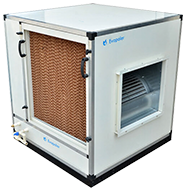

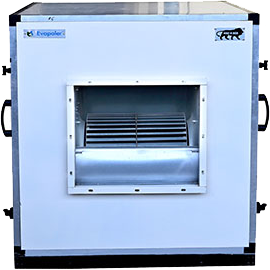
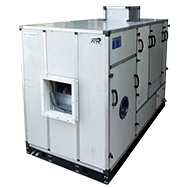
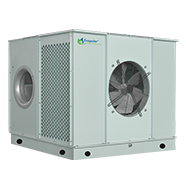
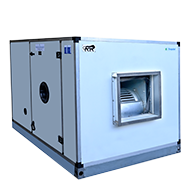
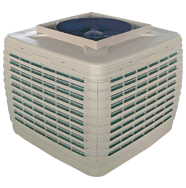
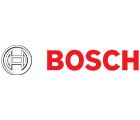
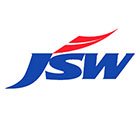
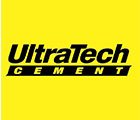
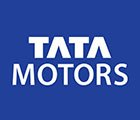
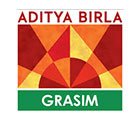
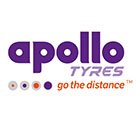
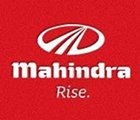
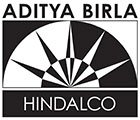


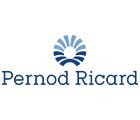
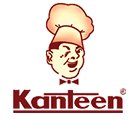
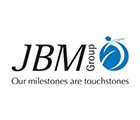
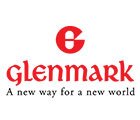
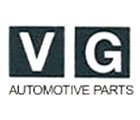
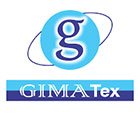
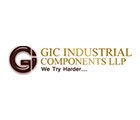
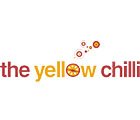
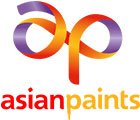
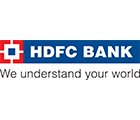
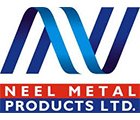
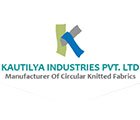
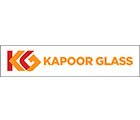
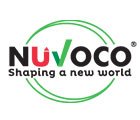

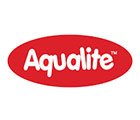
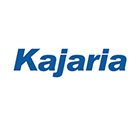

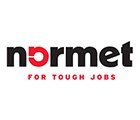


 Download Brochure
Download Brochure  Customer Care
Customer Care